After more than a year of rehabilitation and adapting to the change in his arm, Les regained his ability to play. While recuperating, Les had two single instrumentals on the charts featuring his New Sound, "Lover" and "Brazil." This was the first time anyone had heard anything like this. Capital was selling a ton of records and was anxious for more.
As soon as Les was able, he was back in the Garage Studio figuring out how to hold and play the guitar again. He devised a stand that allowed him to finger the instrument while still in his body cast. His first recording was "Caravan," another record that hit the charts.
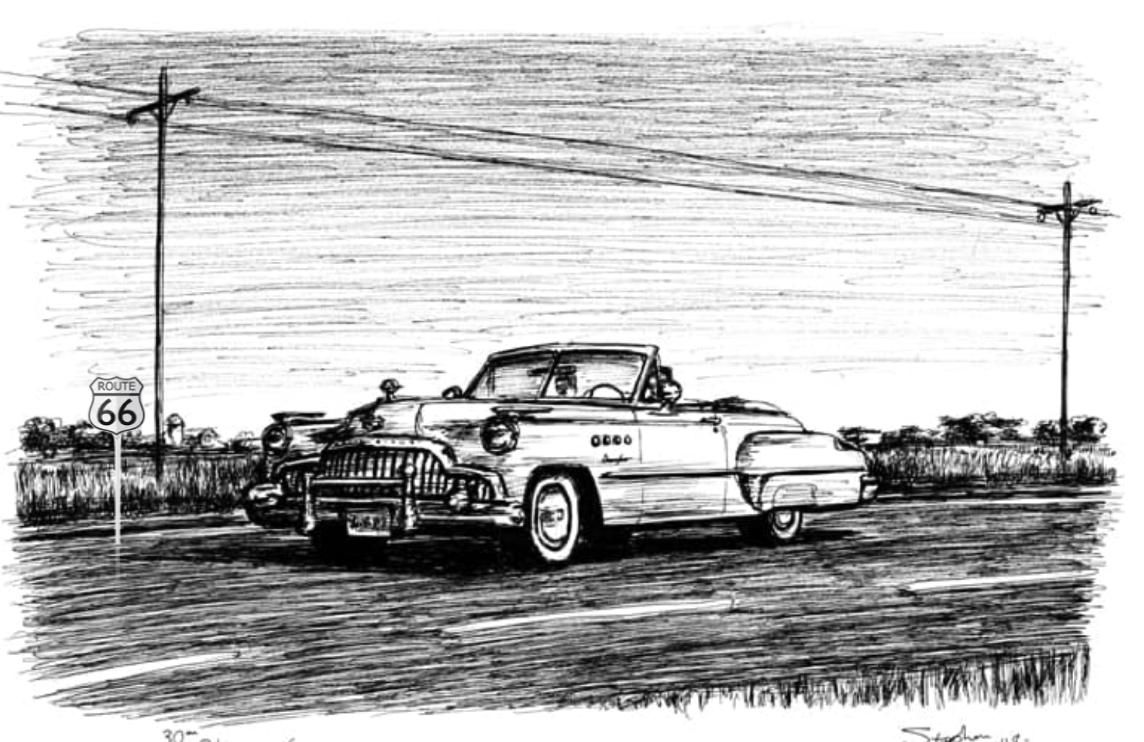

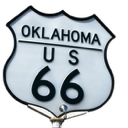

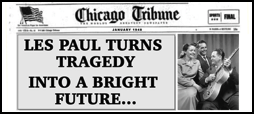
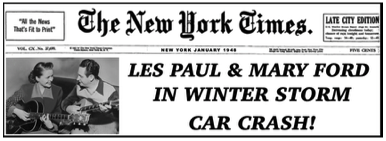
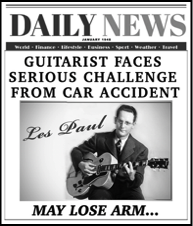
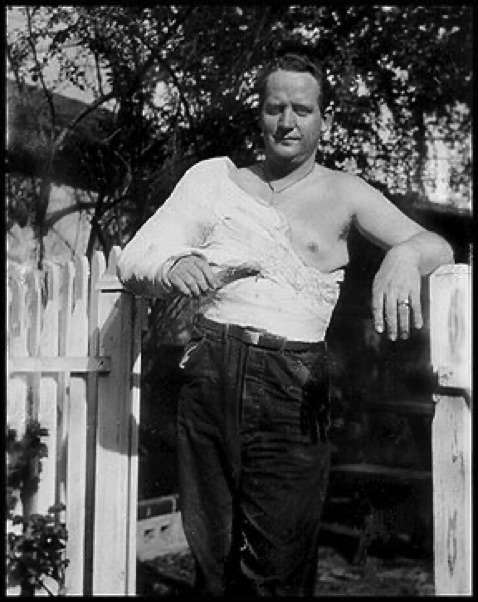
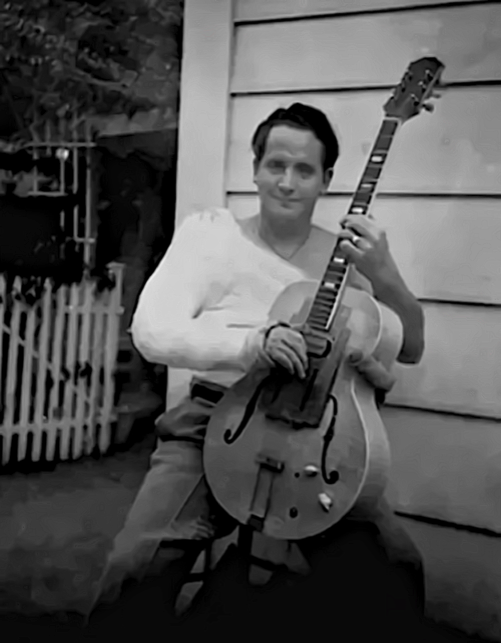
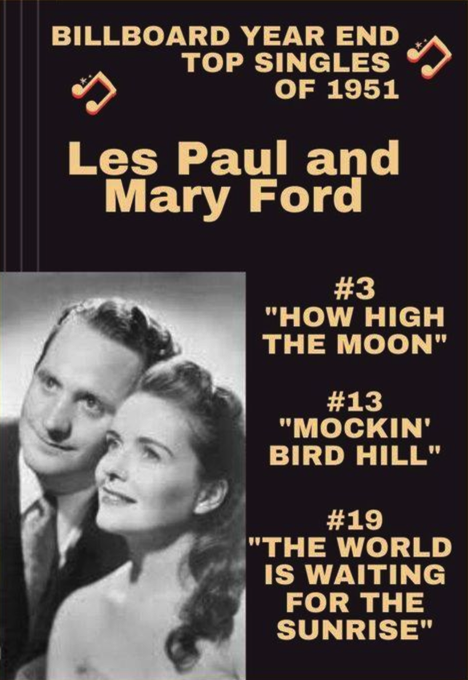

"I'm lying there in the hospital, really a mess,
so it was a question of whether I was even going to make it."
Issue 6
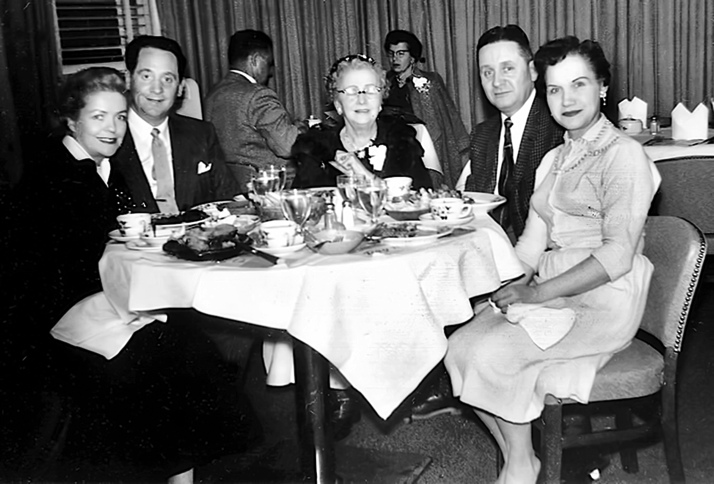
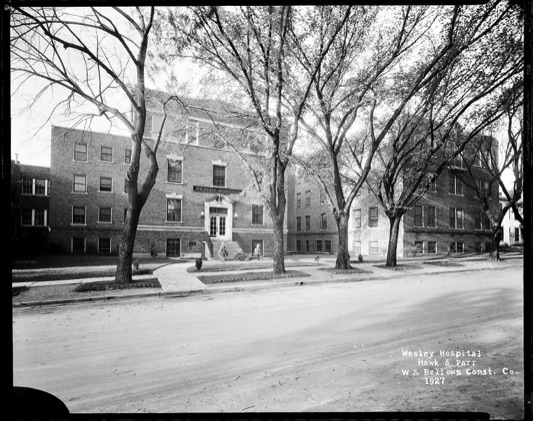
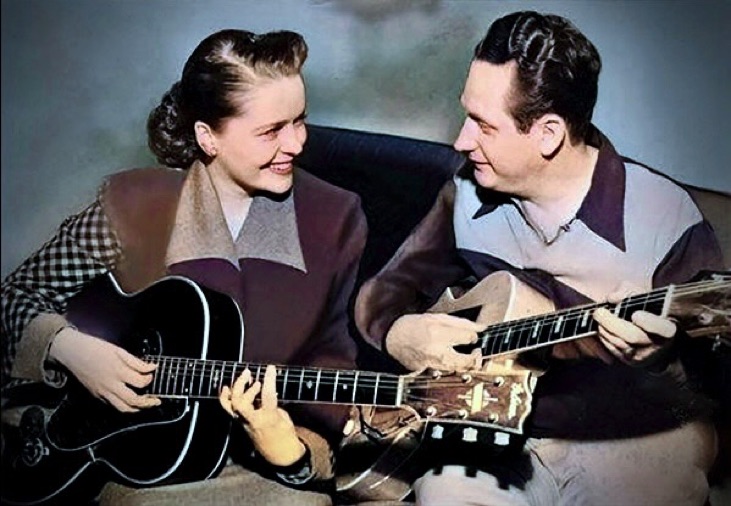
On the way, Les came down with a bad fever and rested in the front seat of their Buick convertible while Mary drove. During the trip, they encountered a nasty winter storm that coated the roads with ice.
When the couple came to a railroad track that ran under a highway that connected the cities of Davenport and Chandler, Oklahoma, Mary lost control of the car. Les managed to take control of the vehicle and steady it slightly. Still, his attempts made no difference in the icy conditions, and the vehicle went over the side of the railroad overpass and plummeted twenty feet into a ravine. There were no seatbelts, so Les, Mary, and their musical equipment were thrown from the vehicle, which landed upside down in the frozen river at the bottom. If they weren't thrown out of the car, Les and Mary would have been killed. There was no traffic due to the storm, but luckily, the car ended up pulling down the telephone and telegraph lines alongside the railroad tracks. It was this interruption of phone service that alerted the authorities that there was a problem. After 8 hours of laying in the snow, the police and an ambulance showed up and took them to the local hospital.
Miraculously, Mary was not seriously injured, but Les damaged his back, collarbones, and shoulder and received six broken ribs, a fractured pelvis, a punctured spleen, a broken nose, and his right arm was shattered with a crushed elbow. He also contracted pneumonia after lying in the snow.
Due to the severity of his injuries, Les was rushed to the hospital in Oklahoma City, where doctors told him that his right arm might have to be amputated. But Les was determined to keep it and play his guitar again and after several surgeries, they managed to save his arm as well as they could. Dr. Knight, the fantastic doctor who would not give up, told Les he was close to the end but managed to keep him alive and save his arm for now. But after two months, the arm was not healing correctly and wasn't getting any better.
So the decision was made to fly Les from Oklahoma City to Los Angeles, California, to see the bone specialist, Dr. Francis McKeaver, at Good Samaritan Hospital. Again, amputation came up, but Les would have none of that; he wanted and needed to play his guitar again. So, the team decided to take another approach, replacing his right elbow with a metal plate and a piece of bone from his leg. There would be no more elbow joint, and once it was set, the bend in his arm would be permanent. Les agreed to this as long as they positioned his forefinger in his belly button when they set it so he could still hold and play his guitar. He lived with his right arm frozen like that for the rest of his life.
It happened on January 26, 1948. Les and Mary were driving on U.S. Route 66 to California after visiting Les' hometown of Waukesha, Wisconsin, to visit his family.
The operation left Les with a chest cast that went completely around his body and down to his hips and also went out his right arm, which was cropped at 90 degrees and held out from his body with a broken broom handle between his arm and hip. He was in that cast for six months. The surgery was successful, but there was a long road to full recovery.
Les explained, "I got a long time to think about things and changed my whole concept. I would switch and have Mary be the singer, just the two of us, and create this new music. It was such an asset to me to be disabled so badly; it forced me to stop doing everything and think about it. And thinking about it changed my whole life right there." And so it happened.
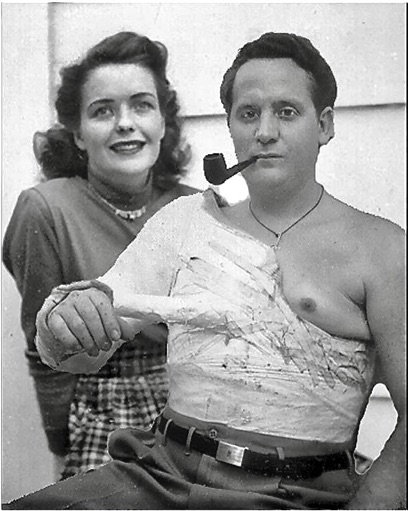
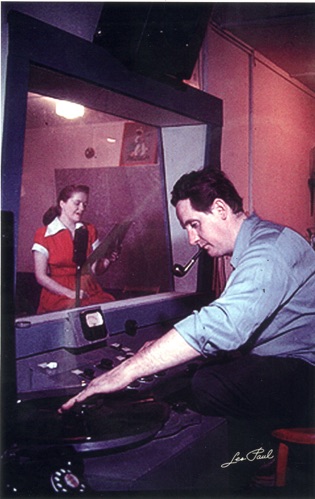


A year and a half after the accident, Les finally had the cast removed at the Mayo Clinic. Although the doctors said to practice a little each day, Les had other ideas. It turns out that his brother and father were opening up a new saloon in Waukesha called Club 400 and were counting on Les to be part of the grand opening.
Not wanting to disappoint the family, Les made the trip with Mary. On the way, his arm swelled up like a tomato. He called Dr. McKeaver, who, knowing Les by now, laughed and told him to elevate the arm on a pillow until the swelling went down, take it easy, and you'll be OK. 'Easy' was not in his nature, and he played the grand opening anyway. Calling an old friend, Warren Downey, to play bass still left him needing a rhythm guitar player. Mary, who was just there to sing and had terrible stage fright, was surprised when Les drafted her to play guitar on stage. It was the first time Les had performed in public since the accident and the first time Les and Mary had performed on stage together.
Les and Mary went on to successfully record thirty-six Gold Records and eleven #1 Pop Hits, along with their own TV show. Of course, Les continued his pioneering innovations. With his Gibson Les Paul guitar and the first Ampex 8-track recorder, that revolutionized the recording industry forever.
With his usual optimistic attitude, Les took this life-altering experience and managed to use it to his advantage, reimagining his career and playing his guitar until the day he left us.
DIGITAL MAGAZINE